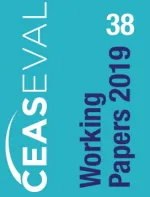Report on a variety of ideal-typical Common European Asylum Systems

Since the influx of asylum seekers in 2015 and 2016 many scholars and journalists have pointed to the responsibilities and failures within European asylum policy. It was argued that the current set of regulations and directives fundamentally expect some common solidarity between the Member States. However, even if there existed a form of solidarity among Member States before the summers of 2015 and 2016, this feeling has dissipated since. The insights from research done within the CEASEVAL project and outside of it has led to many questions on the sustainability and equity of the current asylum and migration policy framework in the EU. One of the most pressing questions is: what should an ideal-typical CEAS look like? To answer this compelling question, this paper critically assesses the strengths and weaknesses of the current CEAS, investigates alternatives, and tries to develop a solution that might bring us close to an ideal CEAS, for instance by involving sub-national actors, such as cities. While analyzing, we consider the fundamental aims of the CEASEVAL project that are fair responsibility-sharing between Member States with full compliance to international protection standards. Furthermore, we take as a guiding principle that the interests of receiving societies as well as those of refugees and other beneficiaries of international protection are served with the optimal retention of their human capital through speedy integration.
Keywords: CEAS, reform, ideal-types, alternatives, solidarity, local-level